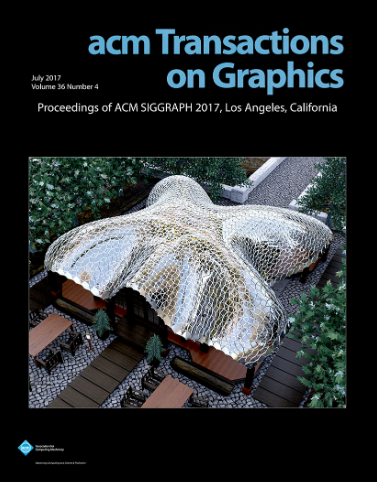斑块-网格:高效且保留特征的神经隐式表面表示法
IF 9.5
1区 计算机科学
Q1 COMPUTER SCIENCE, SOFTWARE ENGINEERING
引用次数: 0
摘要
与传统的离散表示相比,神经隐式表示由于其固有的平滑性和紧凑性而越来越多地用于描述三维形状。然而,基于多层感知器(MLP)的神经表示,由于其光滑的性质,使尖锐的角或边缘圆角,使其不适合表示具有尖锐特征的对象,如CAD模型。此外,神经隐式表示需要较长的训练时间来拟合三维形状。虽然之前的工作分别解决了这些问题,但我们提出了一种统一的神经隐式表示,称为Patch-Grid,它可以有效地拟合复杂的形状,保留描绘不同斑块的尖锐特征,并且还可以表示具有开放边界和薄几何特征的表面。patch - grid学习一个符号距离场(SDF),用一个可学习的patch特征体积来近似形状的一个包围表面patch。为了在CAD模型中形成尖锐的边缘和角,Patch-Grid通过构造实体几何(CSG)方法合并学习的sdf。合并过程的核心是一种新的合并网格设计,它将不同的补丁特征卷组织在一个共同的八叉树结构中。这种设计选择通过将CSG操作限制在局部区域,确保了多个学习到的sdf的稳健合并。此外,它大大降低了每个合并单元中CSG操作的复杂性,使所提出的方法能够在几秒钟内进行训练,以高保真度拟合复杂的形状。实验结果表明,所提出的Patch-Grid表示能够准确地重建具有复杂尖锐特征、开放边界和薄几何元素的形状,在数秒内实现最高的重建质量和较高的计算效率。本文章由计算机程序翻译,如有差异,请以英文原文为准。
Patch-Grid : An Efficient and Feature-Preserving Neural Implicit Surface Representation
Neural implicit representations are increasingly used to depict 3D shapes owing to their inherent smoothness and compactness, contrasting with traditional discrete representations. Yet, the multilayer perceptron (MLP) based neural representation, because of its smooth nature, rounds sharp corners or edges, rendering it unsuitable for representing objects with sharp features like CAD models. Moreover, neural implicit representations need long training times to fit 3D shapes. While previous works address these issues separately, we present a unified neural implicit representation called Patch-Grid , which efficiently fits complex shapes, preserves sharp features delineating different patches, and can also represent surfaces with open boundaries and thin geometric features. Patch-Grid learns a signed distance field (SDF) to approximate an encompassing surface patch of the shape with a learnable patch feature volume. To form sharp edges and corners in a CAD model, Patch-Grid merges the learned SDFs via the constructive solid geometry (CSG) approach. Core to the merging process is a novel merge grid design that organizes different patch feature volumes in a common octree structure. This design choice ensures robust merging of multiple learned SDFs by confining the CSG operations to localized regions. Additionally, it drastically reduces the complexity of the CSG operations in each merging cell, allowing the proposed method to be trained in seconds to fit a complex shape at high fidelity. Experimental results demonstrate that the proposed Patch-Grid representation is capable of accurately reconstructing shapes with complex sharp features, open boundaries, and thin geometric elements, achieving state-of-the-art reconstruction quality with high computational efficiency within seconds.
求助全文
通过发布文献求助,成功后即可免费获取论文全文。
去求助
来源期刊

ACM Transactions on Graphics
工程技术-计算机:软件工程
CiteScore
14.30
自引率
25.80%
发文量
193
审稿时长
12 months
期刊介绍:
ACM Transactions on Graphics (TOG) is a peer-reviewed scientific journal that aims to disseminate the latest findings of note in the field of computer graphics. It has been published since 1982 by the Association for Computing Machinery. Starting in 2003, all papers accepted for presentation at the annual SIGGRAPH conference are printed in a special summer issue of the journal.
 求助内容:
求助内容: 应助结果提醒方式:
应助结果提醒方式:


